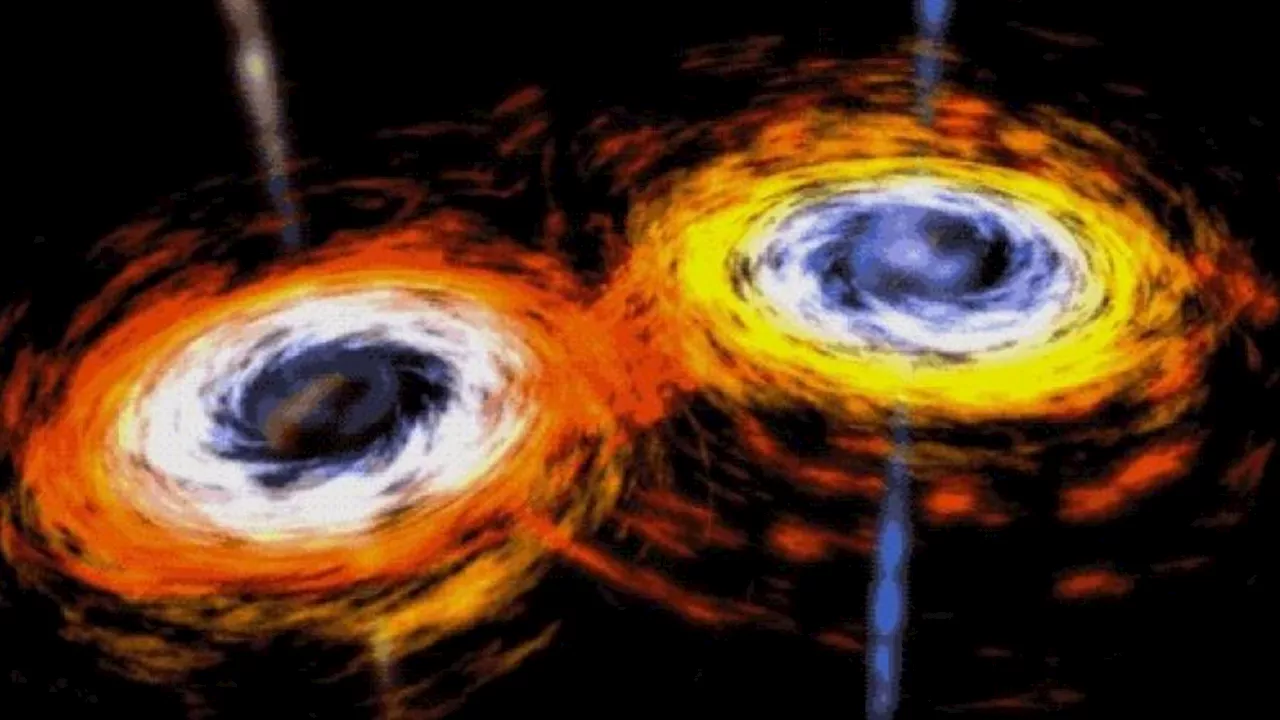Robert Lea is a science journalist in the U.K. whose articles have been published in Physics World, New Scientist, Astronomy Magazine, All About Space, Newsweek and ZME Science. He also writes about science communication for Elsevier and the European Journal of Physics. Rob holds a bachelor of science degree in physics and astronomy from the U.K.
Jam packed issues filled with the latest cutting-edge research, technology and theories delivered in an entertaining and visually stunning way, aiming to educate and inspire readers of all agesBinary pairings of small black holes could be used by astronomers in a cosmic game of"hide-and-seek" to hunt much larger, yet more elusive, supermassive black hole binaries. The technique could, therefore, help solve the mystery of how supermassive black holes grew so fast in the early universe.
As these black holes spiral around each other, they emit continuous low-frequency gravitational waves. These gravitational waves carry away angular momentum , forcing the black holes together, a process called"inspiralling." This increases the frequency of the gravitational waves, thus causing angular momentum to be carried away faster and faster.
This team proposes detecting the subtle change in gravitational waves from stellar-mass black hole binaries that are caused by interfering gravitational waves from supermassive binaries. "The novel aspect of this idea is to utilize high frequencies that are easy to detect to probe lower frequencies that we are not sensitive to yet," Stegmann said.
South Africa Latest News, South Africa Headlines
Similar News:You can also read news stories similar to this one that we have collected from other news sources.
 Trio of NJ swimmers light up the Olympic pool in Paris: 'Small, small world stuff'Two swimmers with New Jersey roots have already scored medals at the 2024 Summer Olympics in Paris, and a third will compete Tuesday as he tries to bring home his own piece of glitter — leavi…
Trio of NJ swimmers light up the Olympic pool in Paris: 'Small, small world stuff'Two swimmers with New Jersey roots have already scored medals at the 2024 Summer Olympics in Paris, and a third will compete Tuesday as he tries to bring home his own piece of glitter — leavi…
Read more »
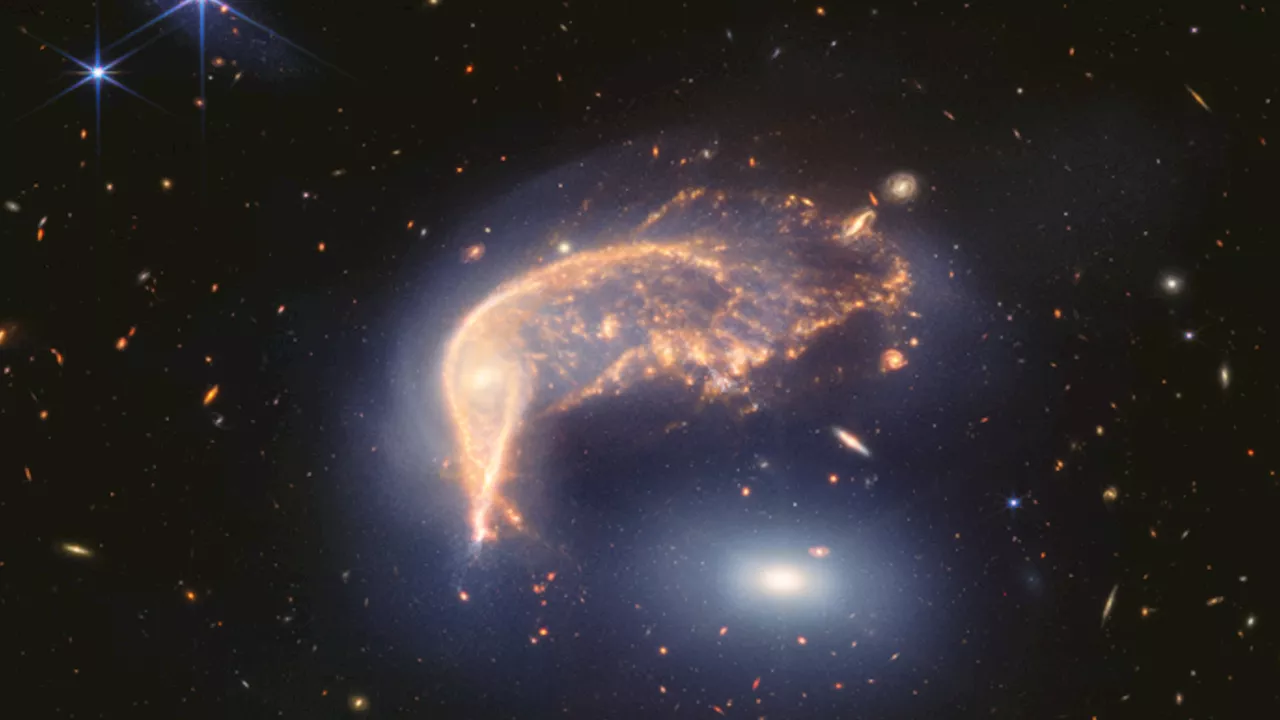 Galactic penguin honors the 2nd anniversary of James Webb Space Telescope's 1st imagesRobert Lea is a science journalist in the U.K. whose articles have been published in Physics World, New Scientist, Astronomy Magazine, All About Space, Newsweek and ZME Science. He also writes about science communication for Elsevier and the European Journal of Physics. Rob holds a bachelor of science degree in physics and astronomy from the U.K.
Galactic penguin honors the 2nd anniversary of James Webb Space Telescope's 1st imagesRobert Lea is a science journalist in the U.K. whose articles have been published in Physics World, New Scientist, Astronomy Magazine, All About Space, Newsweek and ZME Science. He also writes about science communication for Elsevier and the European Journal of Physics. Rob holds a bachelor of science degree in physics and astronomy from the U.K.
Read more »
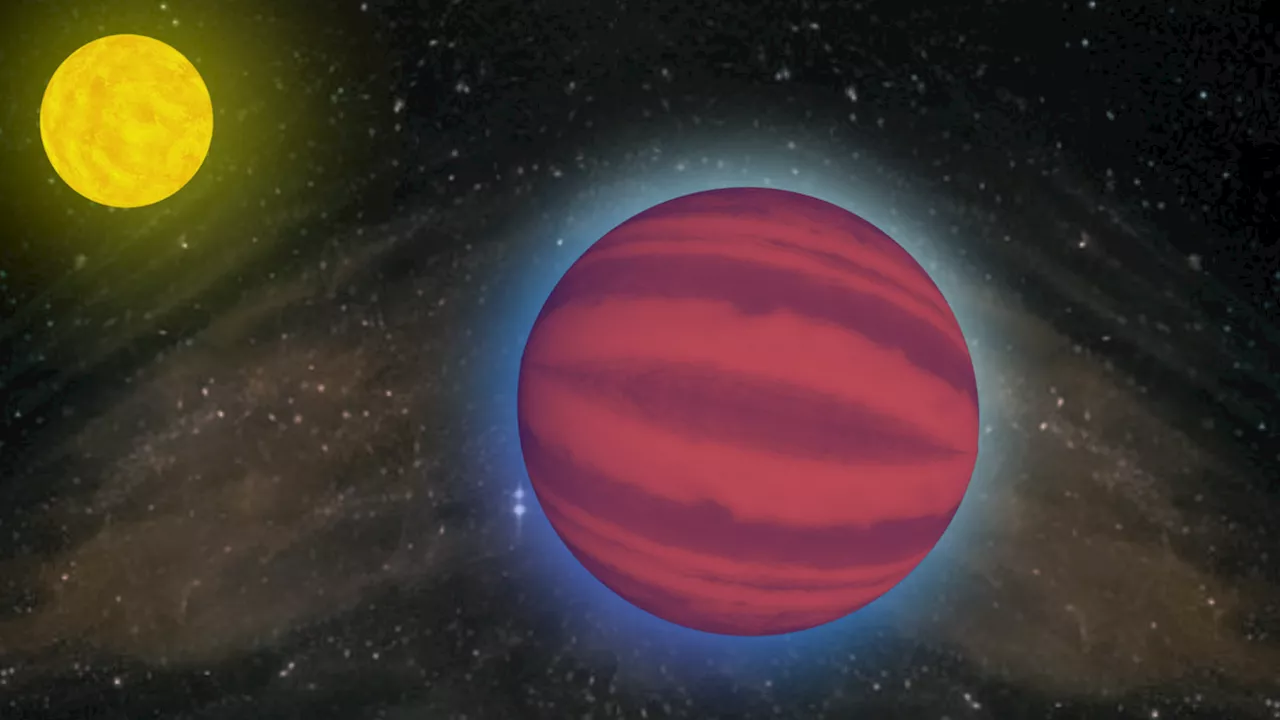 Evidence of water found in atmosphere of mysterious 'metal god of war' exoplanetRobert Lea is a science journalist in the U.K. whose articles have been published in Physics World, New Scientist, Astronomy Magazine, All About Space, Newsweek and ZME Science. He also writes about science communication for Elsevier and the European Journal of Physics. Rob holds a bachelor of science degree in physics and astronomy from the U.K.
Evidence of water found in atmosphere of mysterious 'metal god of war' exoplanetRobert Lea is a science journalist in the U.K. whose articles have been published in Physics World, New Scientist, Astronomy Magazine, All About Space, Newsweek and ZME Science. He also writes about science communication for Elsevier and the European Journal of Physics. Rob holds a bachelor of science degree in physics and astronomy from the U.K.
Read more »
 Can the James Webb Space Telescope see galaxies over the universe's horizon?Robert Lea is a science journalist in the U.K. whose articles have been published in Physics World, New Scientist, Astronomy Magazine, All About Space, Newsweek and ZME Science. He also writes about science communication for Elsevier and the European Journal of Physics. Rob holds a bachelor of science degree in physics and astronomy from the U.K.
Can the James Webb Space Telescope see galaxies over the universe's horizon?Robert Lea is a science journalist in the U.K. whose articles have been published in Physics World, New Scientist, Astronomy Magazine, All About Space, Newsweek and ZME Science. He also writes about science communication for Elsevier and the European Journal of Physics. Rob holds a bachelor of science degree in physics and astronomy from the U.K.
Read more »
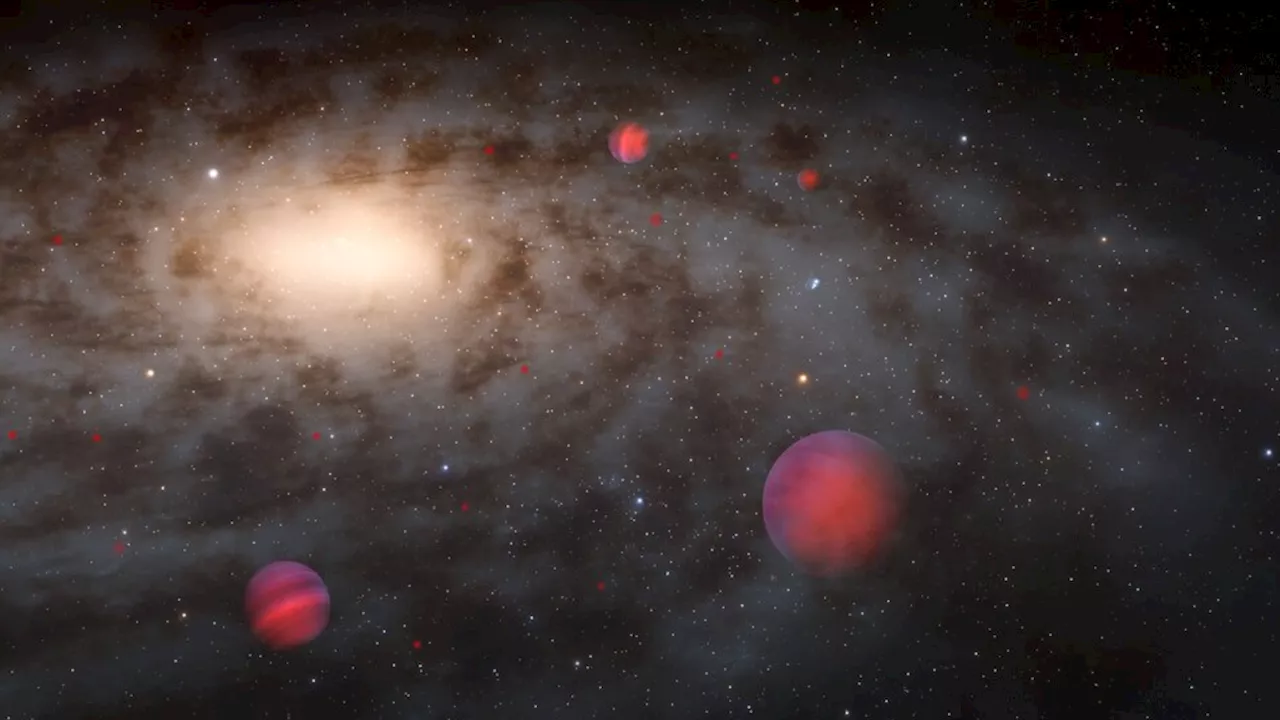 How the Rubin observatory could detect thousands of 'failed stars'Robert Lea is a science journalist in the U.K. whose articles have been published in Physics World, New Scientist, Astronomy Magazine, All About Space, Newsweek and ZME Science. He also writes about science communication for Elsevier and the European Journal of Physics. Rob holds a bachelor of science degree in physics and astronomy from the U.K.
How the Rubin observatory could detect thousands of 'failed stars'Robert Lea is a science journalist in the U.K. whose articles have been published in Physics World, New Scientist, Astronomy Magazine, All About Space, Newsweek and ZME Science. He also writes about science communication for Elsevier and the European Journal of Physics. Rob holds a bachelor of science degree in physics and astronomy from the U.K.
Read more »
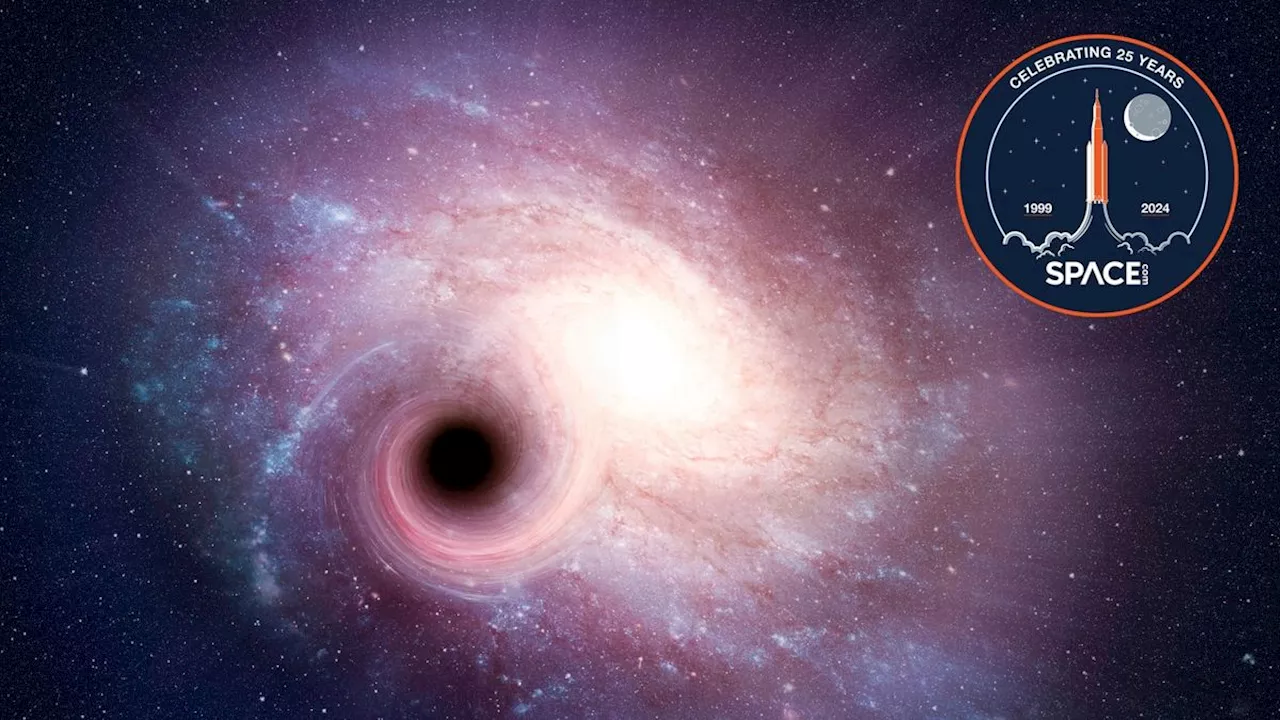 In the last 25 years, black hole physicists have uncovered the unimaginableRobert Lea is a science journalist in the U.K. whose articles have been published in Physics World, New Scientist, Astronomy Magazine, All About Space, Newsweek and ZME Science. He also writes about science communication for Elsevier and the European Journal of Physics. Rob holds a bachelor of science degree in physics and astronomy from the U.K.
In the last 25 years, black hole physicists have uncovered the unimaginableRobert Lea is a science journalist in the U.K. whose articles have been published in Physics World, New Scientist, Astronomy Magazine, All About Space, Newsweek and ZME Science. He also writes about science communication for Elsevier and the European Journal of Physics. Rob holds a bachelor of science degree in physics and astronomy from the U.K.
Read more »
